LED Lighting Guide for Contractors

A clear understanding of how LED lighting works can open immense possibilities for contractors to be able to evaluate and compare performance of luminaires. It will also enable providers to propose the right luminaires for clients based on knowledge of light installations and how they are predicted to perform.
Benefits of LED Lighting
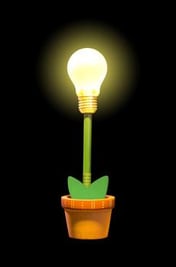 LED or light-emitting diode has revolutionized light installations. This type of lighting requires less energy and loses less heat. The life of a LED bub is longer compared to the traditional ones. Life spans are quoted by companies from 50,000 to 100,00 hours or nearly 100 times longer than the traditional bulb.
LED or light-emitting diode has revolutionized light installations. This type of lighting requires less energy and loses less heat. The life of a LED bub is longer compared to the traditional ones. Life spans are quoted by companies from 50,000 to 100,00 hours or nearly 100 times longer than the traditional bulb.
In addition, it does not need a lot of maintenance and replacement making it cost-effective. To demonstrate, a typical LED lighting will produce over 100 lumens per watt (LPW). Lumen is the amount of light emitted from a source. A 100W incandescent bulb will produce the same luminosity but will use up more energy compared to LED bulbs.
Not only is LED cost-effective, it has outstanding color quality and excellent efficiency. Color rendering index (CRI) is the term used to define the ability of light or lamp to replicate the colors of an object on a scale of 1 to 100 where 100 is the equivalent of sunlight.
LED lighting is also smaller and compact, an easy and quick job for contractors.
What to Look for When Purchasing LED Lighting
The most important specification when buying LED is lumen output. This means that when proposing lights for certain living spaces, you will consider the amount of light it produces (brightness) and ensure it is adequate for your customers' requirements. For example, you will need brighter lights in working spaces such as the kitchen and dimmer lights in the bedroom to induce sleep.
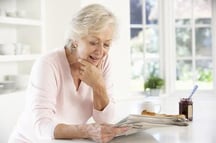 Then you will need to look at the LPW or lumens per watt. Put simply, this is the amount of lumens produced for every watt that is used. The higher the number, the better it is in order to match the CCT or the correlated temperature (measurement of coolness or warmth) measured in kelvins (K). It indicates whether a light is warm, neutral or cool white in appearance. Finally, you have to compare the CRI, with a higher rating a better choice, that is, greater than 80 is rated as good and greater than 90, very good.
Then you will need to look at the LPW or lumens per watt. Put simply, this is the amount of lumens produced for every watt that is used. The higher the number, the better it is in order to match the CCT or the correlated temperature (measurement of coolness or warmth) measured in kelvins (K). It indicates whether a light is warm, neutral or cool white in appearance. Finally, you have to compare the CRI, with a higher rating a better choice, that is, greater than 80 is rated as good and greater than 90, very good.
Other Features to Consider
Safety certifications vary across different regions in the world such as UL, ETL, CSA, NOM and CE. Products must be rated for moisture conditions and intended use/application such as dry, damp or wet. You might see two codes: ingress protection (IP) and insulation contact (IC). IP ratings consist of two numbers: first one indicates protections against solids including dust (0-6 where 0 means not protected and 6 well-protected). IC ratings indicate protections against liquids (0-8 where 0 means not protected and 8 means that it can be submerged in liquids).
Overall, contractors have a large number of reasons for using LED light bulbs as opposed to rival bulb types. As mentioned above these range from flexibility of design and function, to lower energy costs and longevity. The LED bulb's market share is growing just as its purchase price decreases. This is giving contractors the perfect opportunity to create new, stunning and innovative designs, features, and displays that has not been possible until now. Using LEDs will give you the design edge you are looking for to stand out from the crowd.
Guest Blogger: Leigh Marcos worked in home design and lighting before becoming a mother of two and a freelance writer. A keen photographer, she enjoys taking her dogs for long walks through the countryside in the hope of getting that perfect shot.



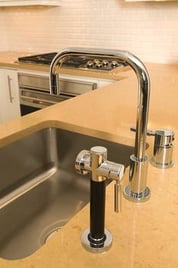 Installed below the countertop, undermount-style sinks offer consumers an easy cleanup in the kitchen and a seamless look. However, contractors should know that this style of sink can only be used with solid-surface kitchen countertops, such as granite, composite or marble. Undermount sinks are an affordable option, and like drop-in sinks, these are available in a variety of different materials — like enameled cast-iron — for example, and colors to fit a kitchen’s design.
Installed below the countertop, undermount-style sinks offer consumers an easy cleanup in the kitchen and a seamless look. However, contractors should know that this style of sink can only be used with solid-surface kitchen countertops, such as granite, composite or marble. Undermount sinks are an affordable option, and like drop-in sinks, these are available in a variety of different materials — like enameled cast-iron — for example, and colors to fit a kitchen’s design.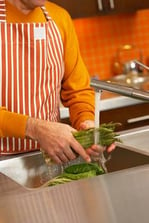 Bamboo
Bamboo We are all getting older every day. That reality hit my wife and me a few years back, motivating us to seek a new home where we could happily and comfortably grow old together. We wanted a home configured to serve us as our health declines. Just as important we wanted one we could also afford to live in and maintain on our retirement income, without the need and cost to move to an assisted living facility. It’s called aging in place and it’s a huge opportunity for home builders and remodelers seeking to differentiate themselves. In this blog I share a list of links to resources and information for construction business owners and consumers preparing to grow old. I also share the list to help contractors and their businesses take advantage of the opportunity and become part of the solution. Here’s why:
We are all getting older every day. That reality hit my wife and me a few years back, motivating us to seek a new home where we could happily and comfortably grow old together. We wanted a home configured to serve us as our health declines. Just as important we wanted one we could also afford to live in and maintain on our retirement income, without the need and cost to move to an assisted living facility. It’s called aging in place and it’s a huge opportunity for home builders and remodelers seeking to differentiate themselves. In this blog I share a list of links to resources and information for construction business owners and consumers preparing to grow old. I also share the list to help contractors and their businesses take advantage of the opportunity and become part of the solution. Here’s why:

 When it comes to your remodeling business, you want to be the best and stand leagues above your competition. But in a crowded field, this can be tough to do. Your customers expect professionalism and a job well done, which is what most of your peers are aiming to deliver as well. So if you’re seeking that extra edge with your business, you need to also do this – and then some. One of the best ways to impress your customers is by staying abreast of industry trends, and the newest innovations that can save them money and improve their results. Here are a couple of the ones worth watching, in commercial and residential remodeling, along with some tips for keeping yourself in the loop.
When it comes to your remodeling business, you want to be the best and stand leagues above your competition. But in a crowded field, this can be tough to do. Your customers expect professionalism and a job well done, which is what most of your peers are aiming to deliver as well. So if you’re seeking that extra edge with your business, you need to also do this – and then some. One of the best ways to impress your customers is by staying abreast of industry trends, and the newest innovations that can save them money and improve their results. Here are a couple of the ones worth watching, in commercial and residential remodeling, along with some tips for keeping yourself in the loop. Just as marketing techniques have all been swept up in the concept of personalization recently, remodeling is not exempt from this trend. In fact, it’s arguable that being adaptable to your customers’ wish lists is the only way you’ll succeed. You might be thinking – wait, isn’t the practice of remodeling personalized already? Yes and no. Yes, because when you remodel a home, you renovate the areas your customer has specified. But it’s not extensively personalized, since many remodeling companies don’t take it a step further and find out how to tailor every bit of construction to the customers’ wants.
Just as marketing techniques have all been swept up in the concept of personalization recently, remodeling is not exempt from this trend. In fact, it’s arguable that being adaptable to your customers’ wish lists is the only way you’ll succeed. You might be thinking – wait, isn’t the practice of remodeling personalized already? Yes and no. Yes, because when you remodel a home, you renovate the areas your customer has specified. But it’s not extensively personalized, since many remodeling companies don’t take it a step further and find out how to tailor every bit of construction to the customers’ wants. Guest Blogger: Rebecca Hasulak is a prolific writer and dangerous dreamer. She sharpened her skill with the written word while she was an Associate Editor of a beauty and pop culture magazine, and further during her time as a Public Relations Executive. Rebecca now writes and delivers PR services under her business Quotable PR, and is happiest when with her daughter and loved ones. Follow her @BecksChristine.
Guest Blogger: Rebecca Hasulak is a prolific writer and dangerous dreamer. She sharpened her skill with the written word while she was an Associate Editor of a beauty and pop culture magazine, and further during her time as a Public Relations Executive. Rebecca now writes and delivers PR services under her business Quotable PR, and is happiest when with her daughter and loved ones. Follow her @BecksChristine.




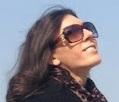

 To help your work stand out from other contractors don’t settle for the same old same old when it comes to designing driveways for your clients. You can mix and match materials like asphalt and brick border, or broken concrete and gravel. Instead of a straight path from the street to the garage, consider a rolling driveway layout to add some sensuous curved lines to the property.
To help your work stand out from other contractors don’t settle for the same old same old when it comes to designing driveways for your clients. You can mix and match materials like asphalt and brick border, or broken concrete and gravel. Instead of a straight path from the street to the garage, consider a rolling driveway layout to add some sensuous curved lines to the property.
 Guest Blogger: Heidi Cardenas is a freelance writer with a background in human resources, business administration, technical writing and corporate communications. She specializes in human resources, business and personal finance, small business advice and home improvement.
Guest Blogger: Heidi Cardenas is a freelance writer with a background in human resources, business administration, technical writing and corporate communications. She specializes in human resources, business and personal finance, small business advice and home improvement.

 Insulated water pipes will boost a home's energy efficiency. This sustainable feature will add to the life expectancy of the pipe system as well moderate the water temperature throughout the residence. Foam tubes made of rubber or polyethylene encase the metal piping to offer better quality and use—just make sure an expert does the insulating.
Insulated water pipes will boost a home's energy efficiency. This sustainable feature will add to the life expectancy of the pipe system as well moderate the water temperature throughout the residence. Foam tubes made of rubber or polyethylene encase the metal piping to offer better quality and use—just make sure an expert does the insulating.


 As the movie industry races to develop three-dimensional blockbusters, the construction world has left the third dimension in the dust. The newest trend is one step further: four-dimensional planning, which allows a person to not only see the entire view of a building, but see it from every possible angle. This gives contractors the opportunity to see possibilities they didn't before, plan better for construction,
As the movie industry races to develop three-dimensional blockbusters, the construction world has left the third dimension in the dust. The newest trend is one step further: four-dimensional planning, which allows a person to not only see the entire view of a building, but see it from every possible angle. This gives contractors the opportunity to see possibilities they didn't before, plan better for construction, 

 Sounds easy right? Not really.
Sounds easy right? Not really. 
 Heat, cold, moisture, insects…
Heat, cold, moisture, insects…
 8 Smart Budget Curb Appeal Makeovers
8 Smart Budget Curb Appeal Makeovers 25 Manliest Homes in America
25 Manliest Homes in America





